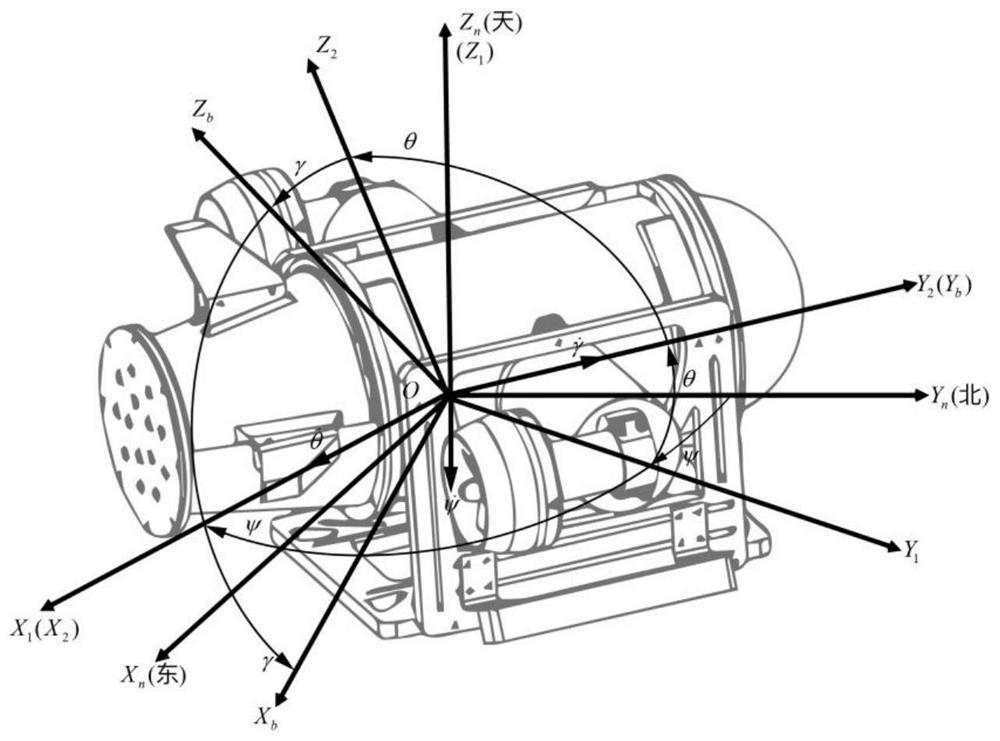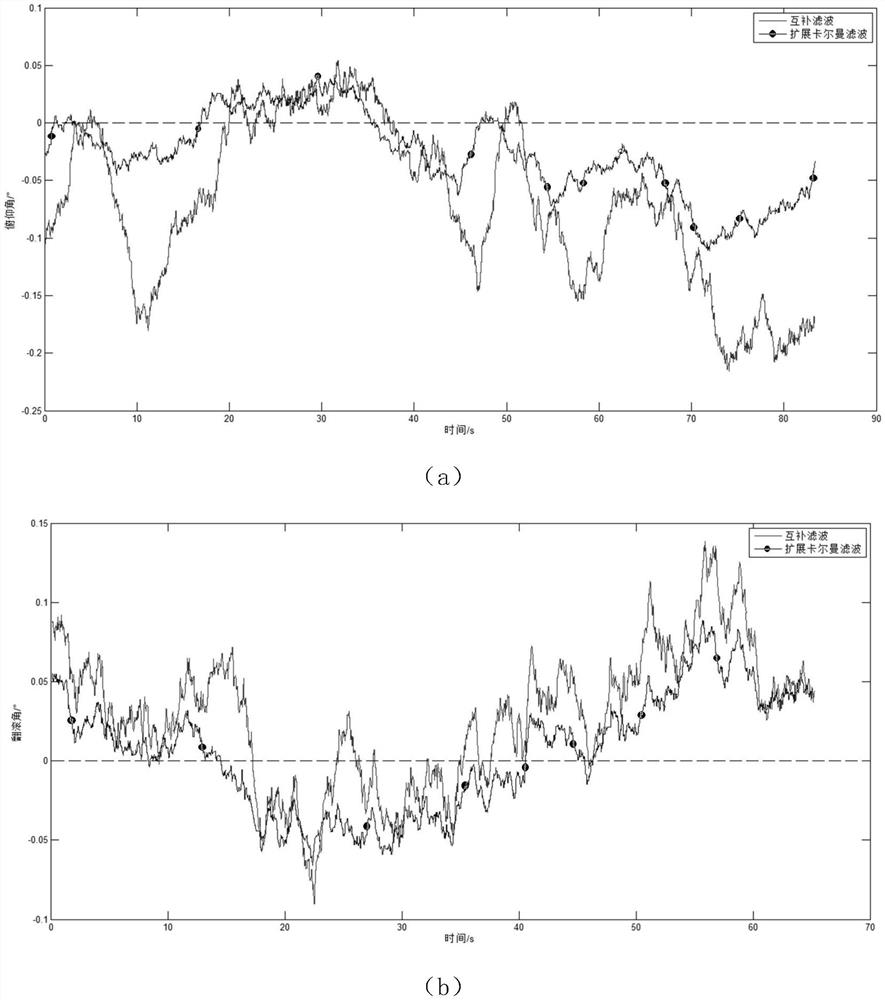A multi-sensor fusion data processing method for underwater robots
A multi-sensor fusion, underwater robot technology, applied to instruments, navigation, navigation and other directions through velocity/acceleration measurement, can solve problems such as low accuracy, estimation errors of attitude, position and velocity, and inability to correct noise matrix, etc. To achieve the effect of broad application prospects
- Summary
- Abstract
- Description
- Claims
- Application Information
AI Technical Summary
Problems solved by technology
Method used
Image
Examples
Embodiment Construction
[0093] The invention provides a multi-sensor fusion data processing method of an underwater robot, which estimates attitude, position and speed information of the underwater robot based on multiple sensors of a gyroscope, an accelerometer, a magnetometer, a GPS and a depth sensor. By fusing all the sensor measurement data, the sensor measurement data with obvious errors can be better eliminated, so that the underwater robot is less susceptible to the failure of a single sensor, and is more suitable for nonlinear systems such as underwater robots. When constructing the state vector, the angle deviation and speed deviation are added to the state vector, and the influence of the angle deviation and speed deviation on the state update is considered to accurately estimate the attitude, position and speed information of the underwater robot. By assuming that the process noise is obtained from the filtering result and the observation result, the differential evolution algorithm is use...
PUM
 Login to View More
Login to View More Abstract
Description
Claims
Application Information
 Login to View More
Login to View More - R&D
- Intellectual Property
- Life Sciences
- Materials
- Tech Scout
- Unparalleled Data Quality
- Higher Quality Content
- 60% Fewer Hallucinations
Browse by: Latest US Patents, China's latest patents, Technical Efficacy Thesaurus, Application Domain, Technology Topic, Popular Technical Reports.
© 2025 PatSnap. All rights reserved.Legal|Privacy policy|Modern Slavery Act Transparency Statement|Sitemap|About US| Contact US: help@patsnap.com



